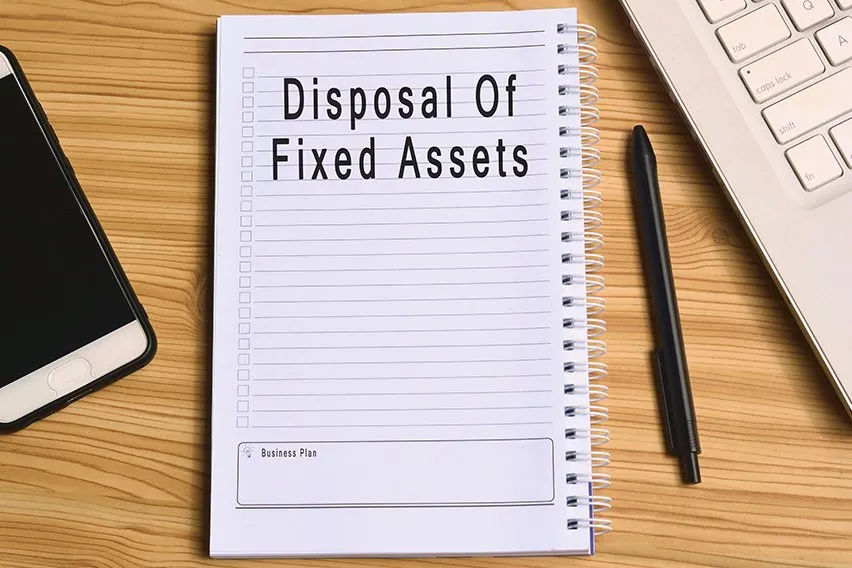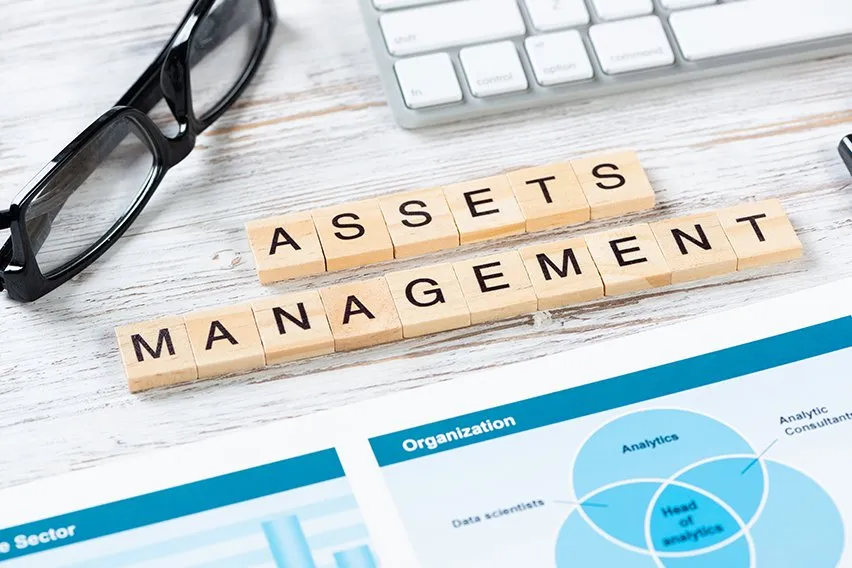How to Improve Cash Flow in Your Business: 11 Ways

Adequate cash flow is a must for any business. Without cash flow, business operations cannot continue. It also means that your business will become stifled. Certain business expenses may not be able to be met. A lack of cash flow can quickly kill a business, if you’re not careful. As such, it’s important to have strategies for improving your business’s cash flow when necessary. This may mean increasing cash inflows, or restricting cash outflow. If you want to stay prepared for anything, knowing how to improve cash flow is a helpful set of skills. Learn more about it here!
Here’s What We’ll Cover:
Cash Flow Strategies For Inflows
Cash Flow Strategies For Outflows
What is Cash Flow?
Simply put, cash flow is the movement of money in a business. This doesn’t just mean money coming into a business. It also refers to the money leaving a business. Business cash flow is what lets a company continue to operate. Transactions can be described in one of two ways:
- Cash Inflows: Cash flows that generate income. This is the money coming into a business. An example of this is sales.
- Cash Outflows: Cash flows that represent money leaving a business. Operational expenses are a form of cash outflow.
Overall, adequate cash flow consists of more cash inflows than outflows. This leads to a company’s overall cash position. A company’s position can either be positive or negative.
- Positive Cash Flow: Indicates that a company’s liquid assets are increasing. In other words, a business is making money.
- Negative Cash Flow: Indicates that a business’s assets are decreasing. This means that a business is experiencing losses.

How is Cash Flow Expressed?
Cash flow is expressed through the cash flow statement. This is one of three main financial statements that all businesses generate. A cash flow statement shows the way a company’s cash is flowing during a specific period of time. This period is generally the same as a company’s accounting period.
Cash flow analysis is the first step to understanding how to improve cash flow. If you keep up with your company’s accounting records, you should have a good understanding of cash flow. If you are looking to increase your understanding, using an accounting software solution can help. Naturally, accounting software leads to better cash flow management. In turn, this causes cash flow improvements.
Why Would Cash Flow Need to Be Improved?
There are a number of reasons that cash flow for a business may need to be improved. Sometimes, cash reserves begin to run low. That can make any business nervous. Other times, businesses are seasonal. That means that they may want to increase inflow during the on-season. At the same time, they may need to employ strategies to reduce outflow during the off-season.
Regardless of the overt reason for improving cash flow, the underlying reason will always be the same. Businesses need to make more money to stay in business. When you start to see a decline in cash flow, then you start to worry about your business being damaged. Knowing cash flow improvement strategies can provide peace of mind during difficult times.
Cash Flow Strategies For Inflows
When you need to make money quickly, improving your cash inflow can help with that. Here are some strategies that you can use to improve cash flow through strengthening inflows.
1. Upsell, Upsell, Upsell
Often, the most underutilized part of any business is its existing customers. Most businesses have a base of loyal customers that come to them. When you’re working with customers of any kind, you should be trying to upsell to them. This strategy requires a certain amount of customer service finesse, however.
When you upsell to existing customers, you’ll need to take a look at their purchase history. Looking through customer receipts can help you understand what they’re looking for. Once you know their typical orders or information, reach out. Offer them services or goods that they’d be interested in alongside their usuals. This does two things. First, it gets you a sale you may not have had. Second, it tells your customers that you’re paying attention. This can make a world of difference.
2. Increase Your Prices
If you have a customer base, that means that they’re coming to you because they need your services. This is a good reason to examine your pricing strategies. Providing your customers with a high-quality product should be your first priority. As long as you can do that, you can justify the increase in price.
Price increases are a larger part of marketing strategies, however. Your marketing efforts should be based on the reasons that customers purchase your items. If you don’t highlight why your product is worth the price it’s set at, then this can adversely affect sales.
One of the strongest reasons to use this cash improvement strategy is the associated costs. When you increase the price of a product you already sell, you aren’t creating an additional expense. This helps improve your cash flow right away, as long as the products continue to sell.
3. Convince Customers to Pay Faster
If your business has any unpaid invoices, it means that you’re missing out on possible cash inflows. Accounts receivable is a huge part of any company’s cash inflows. If you’ve sent invoices that have no response, then it’s time to make paying more appealing. There are a number of ways to do this, but discounts always seem to do the trick.
Offering prompt pay discounts to customers is a great way to make money quickly. A prompt pay discount is simple. When customers pay promptly, they’re offered a discount in return. It should be a slight discount – you never want to lose money when offering a discount. Finding the right balance between too much and not enough is difficult. However, once you’ve found the right amount, you’ll see cash coming in quickly. Customers almost never turn down savings.
Another discount you might consider offering is a cash payment discount. This increases cash flow, too. Cash payments come with no processing fees. This means that the money goes directly into your business’s pockets. Few customers pay in cash, but offering a cash payment discount may change that.
4. Sell in Every Possible Way
While this goes without saying, any modern business needs an online presence. However, the opposite is also true, especially of small businesses. When you’re trying to generate income, you need to be able to sell in every way possible. For brick-and-mortar stores, this means increasing online activity. Most businesses do most of their business online these days. Many businesses only exist online. If your business isn’t selling its products online, you’re missing out on sales.
Now, the same thing can be said of online businesses that aren’t selling in person. Many online businesses with an inventory can secure placement in markets or at booths. To have adequate cash flow, you need to be able to sell your products anywhere. If you can’t, you aren’t being as effective as you should be. Business is competitive, you need to give yourself every advantage possible.
5. Tend to Your Accounts Receivable
Often, many companies are missing out on money that they should be making. This goes hand in hand with handling any unpaid invoices. However, tapping into your accounts receivable balance is a great way to increase cash flow. The money that is sitting in AR is yours to claim, it just needs to be handled the right way.
The collections process can be a tough one. You want to maintain positive customer relationships. However, that’s hard to do when they aren’t paying you. Staying on top of your AR is the best way to make sure you get paid. Customers need a gentle reminder to pay you most times. When you follow up with them, it shows them that you’re aware of two things. You know that they owe you money, and they know that you’re thinking about them. Sometimes that simple interaction is enough to increase business and incoming payments.
6. Sell Off Aging Inventory
Inventory management can be difficult for some companies. As such, excess inventory (or surplus inventory) may occur. This may be part of your current inventory. Sometimes it’s a result of aging inventory. Either way, having too much of it isn’t good for business.
Get rid of your inventory by discounting it. This needs to be done in a specific manner. You have to set prices that will still yield a profit, but sell quickly. Most times, excess inventory is unnecessary. As such, selling it at a discounted price may be a way to generate cash flow that you wouldn’t otherwise see.

Cash Flow Strategies For Outflows
All of the previous strategies were centred around increasing inflows. Now, we’re going to focus on decreasing inflows. Another way to refer to this is to call it cutting costs, or reducing expenses. These are a way to improve cash flow, as well.
1. Lease, Don’t Buy
This is the number one way to decrease expenses from the very beginning. While owning things is appealing, it isn’t always the best strategy. Generally, owning your assets is more expensive in the short-term. You have to pay much more when you own something. This is due to all of the associated costs of owning. Property requires insurance and maintenance. There’s no way around that. These assets also tend to depreciate in value.
Leasing fixes this problem. When you lease your necessary property, you don’t have to pay for insurance or repairs. All of this is covered in the lease, and the actual property owners have to cover these costs for you. Leasing doesn’t create equity, but it does save money in an immediate sense.
2. Ask About Discounts
If you’re considering offering discounts to your customers, it’s likely that your suppliers are as well. Discounts aren’t always displayed for everyone to see. There are times where they’re reserved for customers who know about them, or those who ask for them. When you have a good relationship with a supplier, don’t be afraid to ask about any available discounts. The worst thing they’ll tell you is that none are available. Everyone is trying to save money, after all.
3. Evaluate Your Expenses
More often than not, businesses are paying too much for their expenses. Evaluating expenses is the fastest way to determine that. It’s also the best way to decrease your cash outflows.
When evaluating your expenses, there are a few strategies that can be used. First, consider your current service terms. Often, service providers raise rates for customers that have been with them. This is because they know that people become complacent. Shopping around for new utilities, when given the opportunity, is an excellent way to decrease outgoing cash. Always get quotes for things like phone service or utilities.
The next step to expense evaluation is determining if you have any unnecessary expenses. You may be surprised to find services or products that you pay for that you don’t need. Sometimes, we forget to have services terminated. Evaluating your expenses on a regular basis can help you catch these issues before you’ve paid too much.
4. Buy in Bulk
This seems like it may be reserved for larger companies. It isn’t. Small businesses should be purchasing their materials in bulk, too. This is one of the best ways to reduce expenses. The best part about it is that it reduces expenses over a long period of time, depending on how much you buy.
If you’re unable to meet minimum purchase requirements, find help. Sometimes, minimum purchase requirements can be outside of your budget, or outside of your needs. Finding a partner, or several partners, to go in on bulk buys is a great way to reduce overall expenses. When products are bought in bulk, the price per item is reduced. This means that even with shipping costs for a larger order, you’ll normally pay a fair amount less. Don’t underestimate the power of buying products in bulk. Large companies do it for a reason.
5. Increase Efficiency
While this option affects both inflows and outflows, it’s more imperative for restricting outflows. Producing a product or providing a service costs money. For products, the money you spend is based on materials, production processes, and labour. For services, it’s almost entirely based on labour. When you increase efficiency, you can reduce these costs.
The effect of improving efficiency is compounding. It improves your bottom line as well as your cash flow. Think about it this way; the more efficient you become, the less money you spend on a product. Additionally, it means that you can provide more products in a shorter amount of time. This means that you can spend less while making more. Efficiency is the most targeted area for large businesses for a reason. It can certainly be applied to small businesses as well.
Key Takeaways
Improving cash flow isn’t just about making more money. Sometimes, the best way to improve cash flow is by spending less. Both incoming and outgoing cash affects a business’s overall cash flow. When you aren’t making enough, cash flow becomes tight. When you continue to spend, even when income is down, expenses become too much for your business. To prevent these things, staying ahead of your cash flow is crucial. Employing any of the 11 strategies above shouldn’t just be used during dire times. Cash flow improvement strategies should be used year round.
If you’re looking for more information like this, be sure to visit our resource hub. It’s full of helpful business information similar to this. Check it out today!
RELATED ARTICLES

 What Is Disposal of Assets? Definition & Explanation
What Is Disposal of Assets? Definition & Explanation What Are Abbreviated Accounts? Everything You Need to Know
What Are Abbreviated Accounts? Everything You Need to Know Ecommerce Accounting: A Detailed Guide for Merchants
Ecommerce Accounting: A Detailed Guide for Merchants What Are Assets Under Management (AUM)? Definition & Overview
What Are Assets Under Management (AUM)? Definition & Overview VaR Formula: Learn How to Calculate Value at Risk
VaR Formula: Learn How to Calculate Value at Risk What Is a Purchase Ledger Account?
What Is a Purchase Ledger Account?